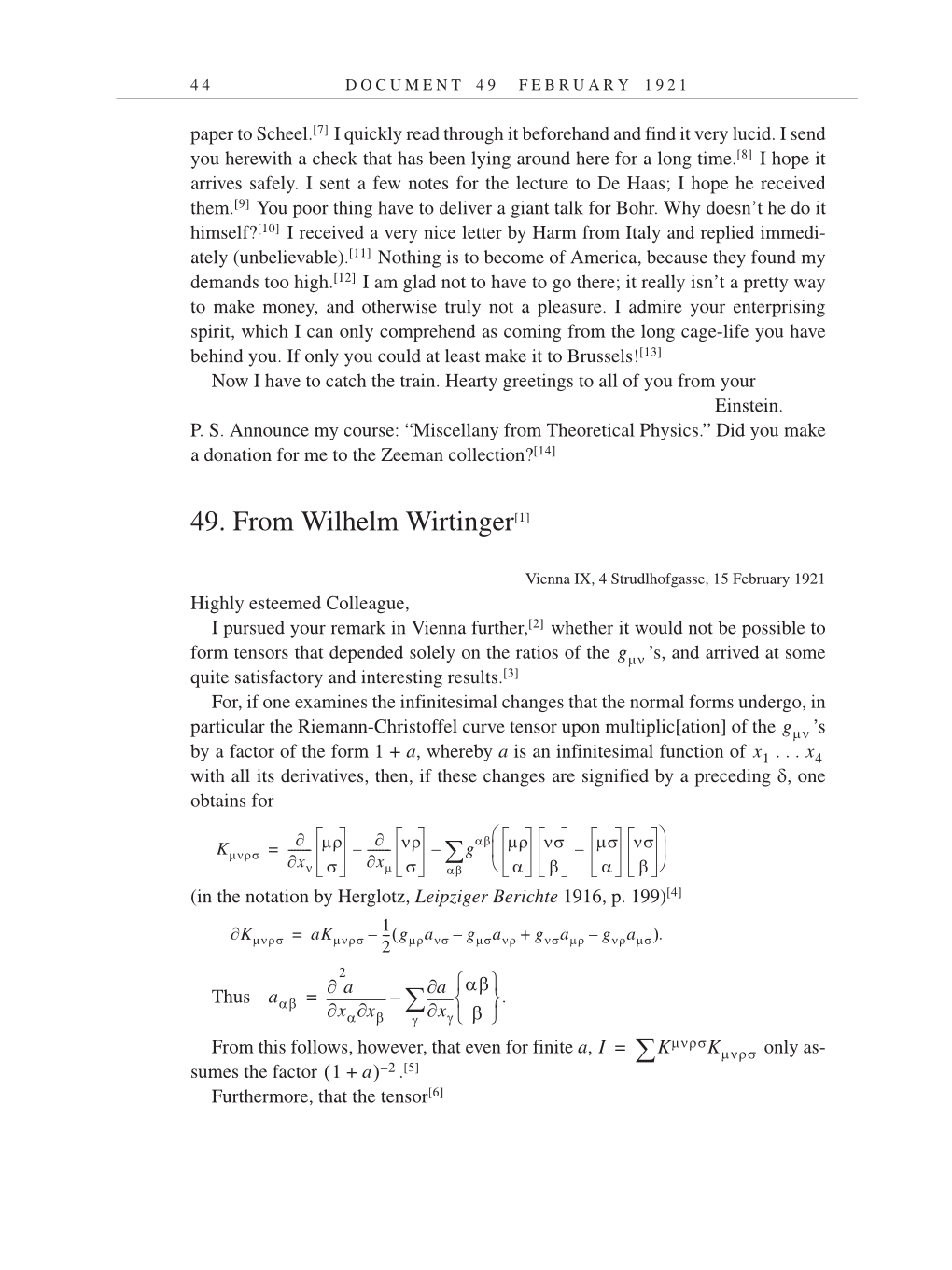4 4 D O C U M E N T 4 9 F E B R U A R Y 1 9 2 1
paper to
Scheel.[7]
I quickly read through it beforehand and find it very lucid. I send
you herewith a check that has been lying around here for a long
time.[8]
I hope it
arrives safely. I sent a few notes for the lecture to De Haas; I hope he received
them.[9]
You poor thing have to deliver a giant talk for Bohr. Why doesn’t he do it
himself?[10]
I received a very nice letter by Harm from Italy and replied immedi-
ately
(unbelievable).[11]
Nothing is to become of America, because they found my
demands too
high.[12]
I am glad not to have to go there; it really isn’t a pretty way
to make money, and otherwise truly not a pleasure. I admire your enterprising
spirit, which I can only comprehend as coming from the long cage-life you have
behind you. If only you could at least make it to
Brussels![13]
Now I have to catch the train. Hearty greetings to all of you from your
Einstein.
P. S. Announce my course: “Miscellany from Theoretical Physics.” Did you make
a donation for me to the Zeeman
collection?[14]
49. From Wilhelm Wirtinger[1]
Vienna IX, 4 Strudlhofgasse, 15 February 1921
Highly esteemed Colleague,
I pursued your remark in Vienna
further,[2]
whether it would not be possible to
form tensors that depended solely on the ratios of the ’s, and arrived at some
quite satisfactory and interesting
results.[3]
For, if one examines the infinitesimal changes that the normal forms undergo, in
particular the Riemann-Christoffel curve tensor upon multiplic[ation] of the ’s
by a factor of the form 1 + a, whereby a is an infinitesimal function of
with all its derivatives, then, if these changes are signified by a preceding , one
obtains for
(in the notation by Herglotz, Leipziger Berichte 1916, p. 199)[4]
.
Thus .
From this follows, however, that even for finite a, only as-
sumes the factor .[5]
Furthermore, that the tensor[6]
g
g
x1 . . . x4
K
x
------- -
x
-------- – g – – =
K aK
1
2
-- - g a g a g a g a – + – – =
a
x x
2
a
x
a
– =
I K K =
1 a + –2
